NIL
How many athletes, agents are in the College Sports Commission’s NIL database
Three weeks into the House Settlement era, it’s Atlantic Coast Conference Commissioner Jim Phillips with the latest data on agents and athletes utilizing the new College Sports Commission’s mandatory NIL GO database.
The system, enforced by international accounting firm Deloitte and stipulated as part of the House Settlement for any present or future Name, Image and Likeness deals worth $600 or more to student-athletes, already has thousands of athlete- and agent-users, according to Phillips on the heels of his most recent conversation with CSC’s Bryan Seeley, the organization’s chief executive office whom it hired away from Major League Baseball earlier this summer.
“I think it’s helpful, because I talked to Bryan within the last 24 hours,” Phillips told reporters Tuesday at ACC Kickoff in Charlotte. “Just so you know a little bit about, like NIL Go, who’s registered. Let me give you these numbers:
“Student-athletes, 15,519. Reps and agents, 1,970. Average daily logins, about 600 student-athletes a day are getting on NIL Go.”
How many of those athletes and agents are submitting NIL deal-proposals? And how many are getting approval from Deloitte via the CSC?
“Approved deals, I don’t have that number,” Phillips said.
Echoing the sentiments of Southeastern Conference coaches in their recent comments at SEC media days regarding the need for true “enforcement” of the $20.5 million revenue-sharing number, Phillips also cites that as a key and believes Seeley is positioning the CSC to help supply guardrails — essentially nonexistent in college athletics much of the past five years — back into NCAA sports.
“It’s about communication, implementation, and compliance,” Phillips said. “That’s part of what Bryan is trying to do. Overall, he’s watching the enterprise and what the settlement agreement has allowed. Rev share, for the first time, and staying within the $20.5 million, legitimate NIL agreements, not pay-for-play, but legitimate, where the student-athlete is performing something in return for the dollars, and roster limits, which I spoke about a little bit earlier in my remarks.
“We’ve taken off some of these restrictions on scholarship limits and some of that. He’s done a really good job. I go back to why did we want to set this up? It was about setting up a standardized set of rules. It was about transparency, which we haven’t had in the NIL era, and the ability when we began having the ability to pay student-athletes, and enforcement. That’s where we’re headed.”
With Deloitte as the neutral arbiter, the CSC has a three-pronged evaluative method it has said it utilizes to examine and either approve or deny potential NIL deals.
Those three tenets are: Payor association (relationship with business/entity and the athlete’s school); Valid business purpose (commercial transaction as opposed to pay-for-play); Range of compensation (does the offered amount reasonably reflect the actual marketplace).
There are three ruling outcomes: cleared, non-cleared and flagged for additional review.
A not-cleared proposal can be revised, cancelled or requested to be reviewed by yet an additional third-party arbiter.
Phillips knows inevitably coaches, athletes and programs are going to test the boundaries of the House Settlement and college athletics’ new general framework.
“When I said earlier, with the emphasis on restraint, I meant it,” Phillips said. “We can’t help ourselves sometimes. People know what the rules are relative to ($) 20.5 (million). They know what legitimate NIL is.
“You can play in that gray area if you want, but all that does is undermine a new structure.”
NIL
Kirk Herbstreit issues an apology for misunderstood post following Army-Navy game
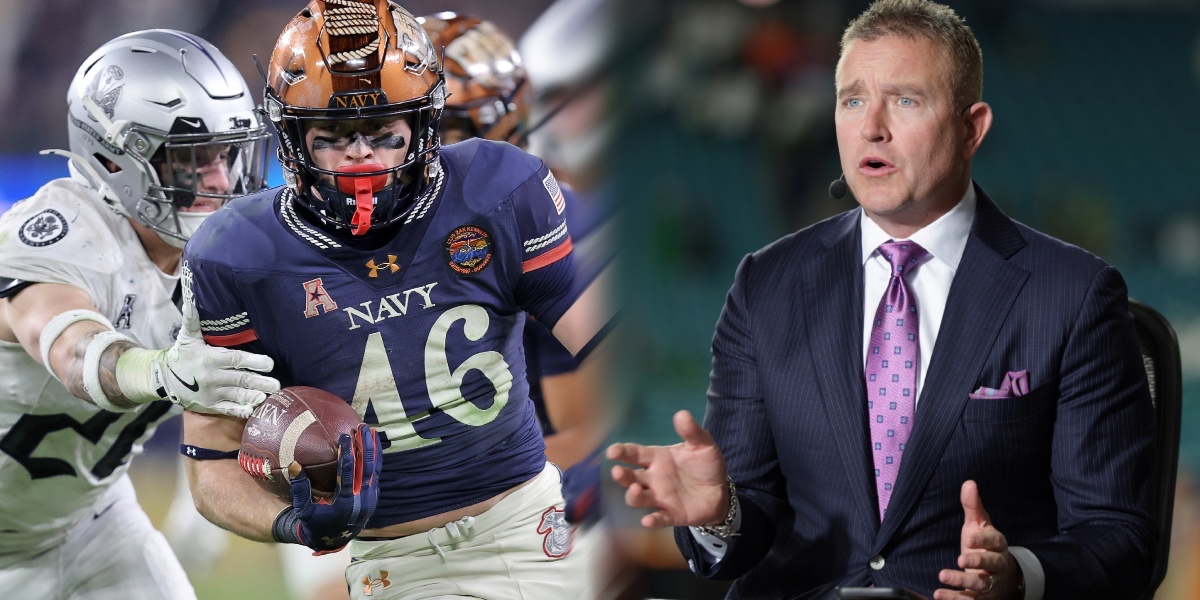
Kirk Herbstreit drew the ire of the college football world earlier this week. Now, he’s moving quickly to clear the air after a social media post sparked backlash following the Army–Navy game.
Herbstreit, who’s become the face of ESPN’s college football coverage, addressed the situation in a lengthy post on X (formerly Twitter). He apologized for what he described as a misleading caption attached to a video clip promoting his Nonstop podcast with colleague Joey Galloway.
“Just wanted to address a mistake that we made on my socials earlier this week related to last weekend’s CFB Saturday,” Herbstreit wrote. “We posted a video where Joey Galloway and I were talking about how strange it was to be home and not traveling on a CFB weekend since the end of August and how we felt like we didn’t know what to do with ourselves. We posted the video with a caption that was very misleading about ‘Weird not having any CFB this weekend.’”
Herbstreit acknowledges that the wording created a bit of confusion, appearing dismissive of games that were played, most notably the Army–Navy Game: “Some took that out of context and ran with it. That’s on me,” he wrote. “My apologies for any disrespect (albeit unintentional) to the teams that played last weekend, especially [Army] and [Navy].”
The original post, which has since been deleted, included a clip from the podcast with the caption, “Saturday not having college football threw us for a loop,” accompanied by a laughing emoji. That message quickly drew a response from Navy Athletics, which quote-tweeted the post with a photo from Saturday’s game.
More on Kirk Herbstreit, Army-Navy controversy
Alas, Navy went on to defeat Army 17–16 in one of college football’s most iconic rivalry games, a matchup that has occupied a standalone window on the Saturday following conference championship weekend for years. While it has no impact on the College Football Playoff, the game remains one of the sport’s most-watched events, averaging 7.84 million viewers on CBS.
In his apology, Herbstreit emphasized that the Army–Navy Game remains one of his favorite events on the college football calendar: “Not sure there is a game I personally look forward to more EVERY year than Army and Navy,” Herbstreit added.
“They play for the love for each other and love for the game. Anybody who has ever watched me for the last 30 years on TV knows how I feel about that game.”
Beyond Army–Navy, last weekend still featured a full slate of college football action. Bowl season opened with Washington facing Boise State, the FCS playoffs held quarterfinal games, and South Carolina State defeated Prairie View A&M in the Celebration Bowl.
Listening back to the deleted clip itself, Herbstreit and Galloway never actually stated there was no football being played. Instead, they reflected on the unfamiliar feeling of being home for the first time since August without their usual travel routine.
Still, the initial caption struck a nerve. It highlighted how easily attention can drift toward the Playoff and power conference landscape at the expense of the broader sport.
Herbstreit closed his statement by reiterating that the controversy stemmed from miscommunication, not disrespect. At the least, he felt it necessary to publicly address the situation, and let the college football world know he meant no ill-will towards Army-Navy.
NIL
$87 million coach reportedly offered ‘blank check’ by Michigan to replace Sherrone Moore
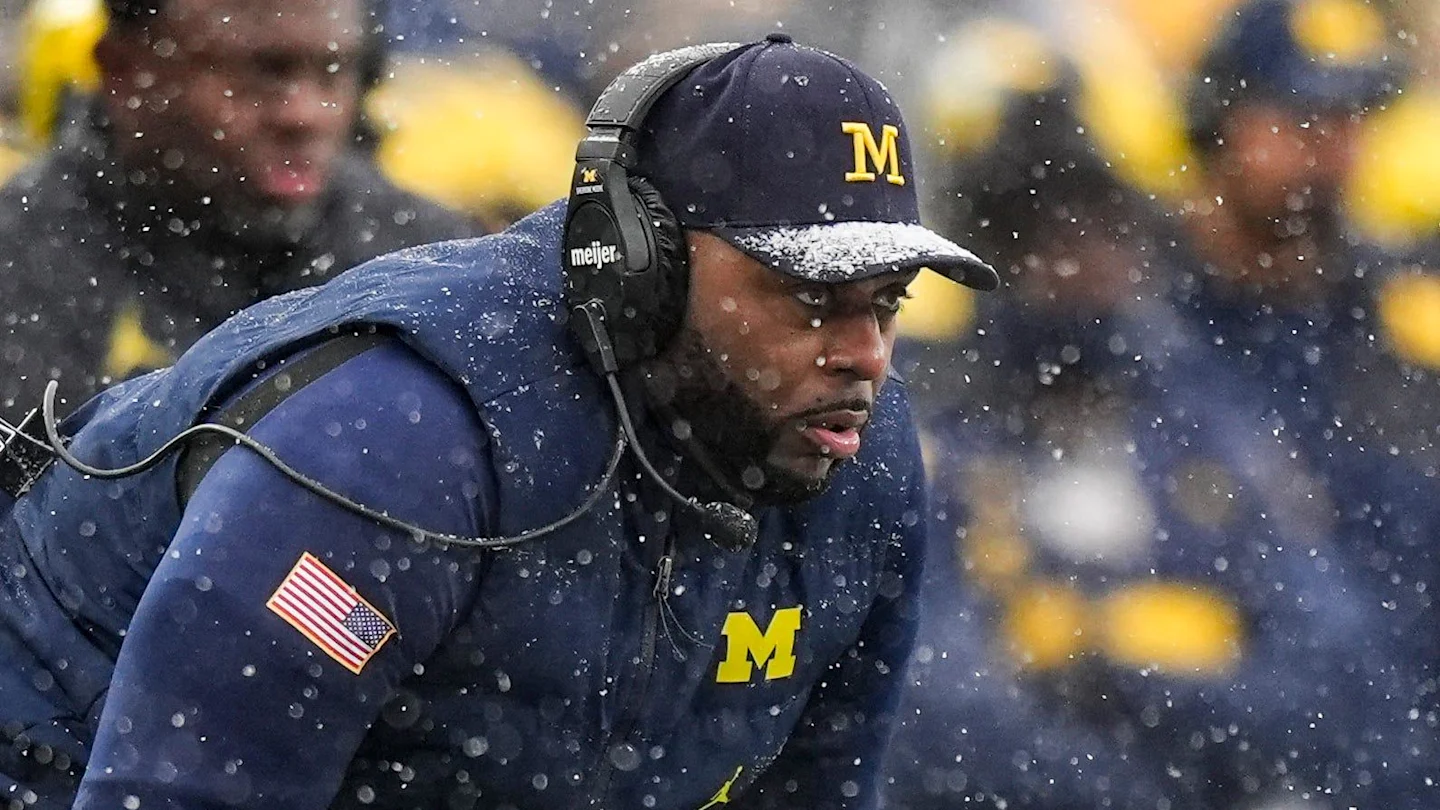
Kalen DeBoer has done his part to deny any interest in the Michigan head coaching vacancy, but that hasn’t stopped an army of vocal college football analysts from speculating that he could jump ship from Alabama and become the next head man of the Wolverines.
DeBoer signed an $87 million contract over eight years with Alabama early in 2024 as the man to replace Nick Saban, and so far the results have been up and down, but mostly positive.
However connected DeBoer may be to the Crimson Tide at this point in time, there are reportedly some serious power brokers linked to Michigan who are extending quite an invitation, according to ESPN analyst Greg McElroy.
What Michigan is offering Kalen DeBoer
“Michigan has been applying the full court press from the very beginning. Michigan has offered what I’ve been told is a blank check to try to get Kalen DeBoer out of Tuscaloosa and to Ann Arbor,” McElroy said on the Always College Football podcast.
That talk comes right as DeBoer has Alabama in the College Football Playoff, where he will seek to improve on his 0-2 record against Oklahoma in the first-round game on Friday.
“Now, the timing is unique here, because Kalen DeBoer is in the midst of preparing his team for [the playoff]. Frankly, I don’t think that Kalen DeBoer is ultimately going to take the job,” McElroy said.
“I don’t think Kalen DeBoer wants to take the job. I think Kalen DeBoer is happy at Alabama. I think the narrative that he’s unhappy, or he’s this or that or his family doesn’t like this or his family doesn’t like that, I think it’s untrue.”
Current insider reporting suggests that DeBoer’s representatives are seeking a contract extension from the school for the coach, but that remains a very fluid situation right now with no set conclusion.
But if DeBoer should lose to the Sooners again and get the Tide bounced from the playoff early?
Sure, it would raise the temperature around his tenure, but to suggest that it would be enough for him to abandon ship and try again at Michigan is unlikely.
Michigan will still pursue, however unlikely
“I think people are just grasping at straws, but it doesn’t mean that Michigan won’t continue to try to woo him,” McElroy said.
“It doesn’t mean they’re going to stop trying to go get him. They’re gonna try. Whatever they have to do, they’re gonna try, because there’s a lot of people that believe that Kalen DeBoer is one of the top coaches in America. So you go all in for that coach. And I think Michigan will continue to try to go all in on Kalen DeBoer.”
It stands to reason that Michigan, which finds itself in a coaching decision it didn’t expect to be in at this point in time, will do whatever they can to attract a big name.
But what if that big name already has a big job?
The feeling between Michigan and DeBoer is not mutual
“They can be interested. Is the interest actually reciprocated? I don’t know the answer to that, frankly. I frankly don’t think it is,” McElroy said.
“I think Kalen DeBoer, like I said, will be the head coach [at Alabama] moving forward, but he’s going to likely turn down more money at Michigan if he does end up staying in Tuscaloosa.
“At least, that’s what it sounds like right now. Because when I hear ‘blank check,’ you can interpret that how you want to interpret that.
“It sounds like, to me, Kalen DeBoer is going to be very wealthy on either side. But I do know that Kalen DeBoer is, right now, not interested in having a conversation with Michigan, and I do know this: that Michigan is not interested, yet, in accepting, the answer no.”
Read more from College Football HQ
NIL
Bankruptcy trustee presses case against Deion Sanders’ son Shilo
Dec. 17, 2025, 10:04 p.m. ET
- Shilo Sanders is in a legal dispute with a bankruptcy trustee over approximately $250,000 in alleged unauthorized fund transfers.
- The core issue is whether Sanders’ NIL earnings belong to him or to the bankruptcy estate for his creditors.
- Sanders filed for Chapter 7 bankruptcy in October 2023 to discharge over $11 million in debt from a 2022 civil court judgment.
The trustee in the bankruptcy case of former Colorado football player Shilo Sanders filed a response in court Dec. 17 that supports his argument that Sanders violated bankruptcy law by making unauthorized transfers to himself of approximately $250,000.
The court filing is the latest volley in bankruptcy case of Sanders, who filed a Chapter 7 petition in October 2023 seeking to get out of more than $11 million in debt.
The trustee in the case, David Wadsworth, sued Shilo Sanders in October, seeking recovery of the money and an accounting from Sanders. Sanders’ attorney then filed a motion to dismiss that complaint in November by arguing that the trustee had it all wrong.
The latest filing from Wadsworth’s attorney rebuts that notion as litigation related to the bankruptcy case continues on multiple fronts in addition to this one. Sanders’ debt stems from a civil court judgment in Dallas in 2022.
“The Defendants are wrong,” the trustee’s attorney, Peter Cal, said in court documents.
What is at issue in Shilo Sanders’ bankruptcy case this time?
The court-appointed trustee in this case is in charge of rounding up Sanders’ non-exempt assets for the bankruptcy estate to divide among his creditors. The trustee has alleged having trouble doing that and filed a complaint against Sanders related to money he traced in Sanders’ business accounts for earnings from his name, image and likeness (NIL). Those businesses are named as defendants with Sanders in the complaint – Big 21 and Headache Gang.
The big issue is who the money in question belongs to – the bankruptcy estate or Sanders. Sanders’ earnings before he filed the bankruptcy petition generally belong to the bankruptcy estate for the benefit of creditors, while earnings that came from work after the bankruptcy filing belong to Sanders.
Sanders’ attorney, Keri Riley, stated in court documents that the money in question belonged to Sanders because they were “post-petition earnings.”
The trustee disputed that in his response Dec. 17 and said such factual disputes can’t be resolved at this stage of the litigation.
Sanders “relies on the unsupported argument that all funds in the Big 21 Bank Account were post-petition earnings of the Debtor (Sanders),” the trustee’s attorney stated. “The Court should not consider the argument because it relies upon a factual assertion that is not included in the (trustee’s) Complaint.”
The trustee’s attorney then includes a footnote.
“Because there were funds in the Big 21 Bank Account on the Petition Date, the Defendants’ argument is demonstrably wrong,” the footnote states.
Timing of Shilo Sanders’ NIL earnings in dispute
The trustee’s attorney also noted that “even if the earnings are paid to the Debtor post-petition, they are considered prepetition earnings when they arose from a prepetition contractual interest.”
He argued the trustee pleaded his case well enough for the trustee’s complaint against Sanders to move forward. A bankruptcy judge will decide on that.
“It is more than plausible that at least certain of the post-petition deposits were based on the Debtor’s prepetition NIL contracts and, therefore, are subject to turnover,” the trustee’s filing states.
The trustee said he wants Sanders to “account for the distributions” after “improperly” exercising control over property of the bankruptcy estate.
How did the Shilo Sanders bankruptcy case originate?
A security guard at Sanders’ school in Dallas sued Sanders and his parents in 2016, alleging Shilo caused him permanent and severe injuries when he tried to confiscate his phone at school in 2015, when Shilo was 15. The parents were dismissed from the case before trial, but when the case finally went to trial in 2022, Shilo didn’t show up for it and got hit with a $11.89 million default judgment as a result.
The security guard, John Darjean, then moved to collect on that judgment in 2023, leading Sanders to file for bankruptcy to try to get out of it.
Darjean is fighting that with a separate complaint that alleges the debt should not be discharged in bankruptcy court because it stems from a “willful and malicious” injury. Sanders has claimed he acted in self-defense. That complaint remains pending, as does a separate complaint from Darjean that accuses Sanders of improperly omitting or concealing assets in his bankruptcy closures, which he denied.
What is Shilo Sanders doing now?
Sanders, 25, is out of football after being waived by the Tampa Bay Buccaneers before the season. He recently said he was moving to Miami and is pursuing other interests, such as acting and rap music.
He graduated from Jackson State before transferring to play for his dad at Colorado in 2023. Earlier this year, he also earned a master’s degree at Colorado in organizational leadership.
He is the middle of Deion Sanders’ three sons. His younger brother Shedeur is quarterback of the Cleveland Browns.
Follow reporter Brent Schrotenboer @Schrotenboer. Email: bschrotenb@usatoday.com
NIL
$45 million college football head coach reportedly offers Lane Kiffin unexpected role

The College Football Playoff travels to Oxford on Saturday with an unusual subplot: an 11-win Ole Miss team entering the postseason without the coach who compiled that record, Lane Kiffin.
Meanwhile, Tulane, which Ole Miss faces Saturday at 3:30 p.m. ET at Vaught-Hemingway Stadium, also has an outgoing coach, as Jon Sumrall has opted to finish the season in New Orleans before taking over at Florida.
Kiffin’s 2025 Rebels closed the regular season at 11–1, securing a CFP berth behind a high-powered offense that averaged 498.1 total yards per game, the third-most in college football.
Within days of the Egg Bowl, Kiffin accepted LSU’s offer, a reported seven-year contract worth roughly $91 million, and announced he would not coach Ole Miss in the playoff.
Ole Miss promptly elevated defensive coordinator Pete Golding to lead the program into the bracket.
On Wednesday, Sumrall broke down the matchup and joked that he had offered Kiffin a spot in Tulane’s coaches’ box.
“They’ve got a lot more stability for the game than people realize. They’re going to be who they’ve been; they’re just not going to have Lane on the sideline,” Sumrall said. “I’ve reached out to Lane to see if he wants to sit in our coaches’ box for the game, but he hasn’t given me an answer yet.”

Tulane arrives after winning the American Athletic Conference and finishing 11–2.
The Green Wave boasts one of the nation’s best turnover margins (+10) and a defense that has tightened steadily since an early setback in Oxford on Sept. 20, a 45–10 loss.
Adding to the narrative, Sumrall, who signed a reported six-year, roughly $45 million deal to become Florida’s next head coach, has said he will remain with Tulane through the postseason before joining the Gators full-time.
Tulane has already designated passing-game coordinator Will Hall as Sumrall’s successor once the playoff run concludes.
This moment reflects a new normal in college football’s accelerated coaching market, with major hires unfolding as teams prepare for postseason play.
Read More at College Football HQ
- $3.7 million college football head coach named clear candidate for Michigan vacancy
- College football program signs $1.2 million deal with NFL legend
- College Football Playoff team losing all-conference player to transfer portal
- $2.1 million college football QB announces return to Big Ten program
NIL
$36 million college football coach reportedly out of race for Michigan vacancy

Michigan is the last remaining Power Four college football program to find a new head coach in the 2026 cycle.
The Wolverines fired head coach Sherrone Moore on Dec. 10 with cause and are now one week into the coaching search. Alabama head coach Kalen DeBoer, Arizona State head coach Kenny Dillingham, and Missouri head coach Eli Drinkwitz are among those being floated as potential replacements.
One name that previously received attention for the vacancy was Washington head coach Jedd Fisch. On3 and ESPN college football insider Josh Pate reported Fisch’s interest in the Michigan head coaching vacancy has declined in the last few days.
“There’s been some sentiment today that maybe Jedd Fisch’s name has cooled,” Pate said. “I think that’s accurate. The critical take-home points are that I don’t know if Jedd Fisch is going to be a factor in the Michigan search moving forward… I don’t think Jedd Fisch is going to be an option for them.”

Fisch’s waning interest is a relief to Washington, as it is all too familiar with head coaches leaving for other jobs. The Huskies lost Kalen DeBoer to Alabama in the 2024 offseason when Nick Saban announced his retirement from the Crimson Tide.
The Florida alumnus spent the first 24 seasons in the coaching ranks as an assistant at a high school, in the Arena Football League, at six different NFL franchises and five different college football programs. He served as Michigan’s passing game coordinator in 2015 and 2016 under Jim Harbaugh, part of the reason he is linked to the Wolverines’ current opening.
The only head-coaching capacity Fisch had served in before he took the Arizona vacancy was as UCLA’s interim coach in the 2017 Cactus Bowl against Kansas State.
Arizona finished 1-11 in 2021, the lone win against California (10-3) in November. The Wildcats improved to 5-7 in 2022, a record that included an upset victory over a ranked UCLA team. Fisch followed up a 3-3 start in 2023 with seven consecutive wins, including an Alamo Bowl win over Oklahoma (38-24).
Fisch filled the Washington vacancy left by DeBoer in the 2024 offseason. An up-and-down first season led to a 6-7 season, capped by a Sun Bowl loss to Louisville (35-34).
The Huskies put together a stronger effort in 2025. Washington concluded the regular season at 8-4 and defeated Boise State (38-10) in the LA Bowl in SoFi Stadium.
NIL
Eli Drinkwitz: NIL Buyouts And Tampering Are Making ‘College Football Sick’

Just two weeks away from the transfer portal opening in college football, coaches across the country are trying to maintain a roster while opposing schools look for any possible way to steal a player, no matter if it comes with paying a buyout.
On Monday, we all witnessed multiple starting quarterbacks decide to declare their intentions to enter the portal. This included DJ Lagway, Dylan Raiola, Brendan Sorsby and Sam Leavitt.
All of these guys would have had the opportunity to play next season at their current schools, with maybe Lagway being an outlier because of the new staff in Gainesville. But, we are certainly in a drastically different era of college athletics.
Transfer Portal Carousel: Quarterbacks, NIL Deals And The Rise Of A WILD College Football Free Agency Market
“There’s a warning that the system that we’re in is really sick right now, and college football is sick,” Eli Drinkwitz said. “There’s showing signs of this thing really cracking moving forward, and we need to get something under control.”
Contracts: How ‘Buyouts’ Are Handled, Or Trying To Be
At the moment, there are players deciding that entering the transfer portal is the best route to take when it comes to cashing in, with chances of making it to the NFL not guaranteed. This also means that certain players are deciding to enter the transfer portal while still under contract with a school like Missouri.
In reality, there are no rules at the moment. Some might think the new College Sports Commission is setting guidelines for future enforcement, but there is still no agreement signed that would have them running the show.
After Sherrone Moore Scandal, Michigan Board Orders Investigation Into Athletic Department
We have seen players re-signing with schools, while others are being shopped around to others. So, what happens if an athlete has signed an agreement with one school, but is looking at the opportunity of transferring?
Here’s the best way to explain what we’re seeing right now in college athletics when it comes to a player leaving one school after already being paid through a “front-loaded” deal before new rules were put into place over the summer.
Let Me Try To Summarize It
“Hey, College Player, you’re being paid $4 million. Here’s $3.8 million before the house settlement is passed. Once you hit the portal, we can terminate the deal, but if it’s terminated because you left, you owe us the money. If another collective cuts the check at the new school, the player would then have that taken out of their new school’s contract.
“And, if the player decides to balk at paying their previous school back, this is where lawsuits could continue. The athletes have already taken this money, but they still owe their previous school for the contract that has not been fulfilled. Somebody has to pay back that money, or what they agreed to under the particular contract.”
I hope that explains it, for the folks still trying to grasp all this.
As we’ve reported before, this is where certain contract language will have “buyout” clauses. But, who is enforcing this? This is what Eli Drinkwitz was trying to emphasize on Tuesday.
“I don’t know, some of the players that have entered the portal were under two-year contracts, and their anticipation is that another school will pay their buyout, or they’ll pay it back themselves,” Drinkwitz told reporters. “So, you know, contracts are contracts. I think there’s been an assumption that, not gonna go there. So we’ll see, we’ll see, you know. Right now, there are perceived rules, and then we’ll figure out what are the real rules moving forward.”
As you can tell, there is no clarity, and as much as some of these coaches would have loved the help of Congress, they might end up waiting a while before enforcement can actually take place.
It’s No Longer Tampering. College Athletes Are Being Shopped
Most coaches in this era would rather handle situations behind the scenes, rather than calling out an opposing school during a press conference setting.
Why? Because there is “tampering” going on at every school. Now, it might not be as rampant at some compared to others, but it’s happening. This could come in the form of a grad-assistant reaching out to the high school coach of a player enrolled at another school.
It happens when the player is not directly contacted, but goes through a third party. Agents are so prevalent in college athletics that they are also shopping players around to the highest bidder. And, we’re not talking about well-run companies that have made a name for themselves over the past six years.
The term “street agent” is used a lot in the industry, which is essentially a person who is working on a campus, acting as if they are running the business affairs of a particular athlete. They have zero training, besides being able to operate a social media account.
But, some of these athletes know no better, and will trust their futures with someone who acts as though they have their best interest at heart. I’m sorry, but having your buddy handle your business affairs, and most importantly life decisions, is not the smartest move.
“You know, tampering is at, I mean, the highest level. There is no such thing as tampering. It’s just, because there’s nobody that’s been punished for tampering. And so everybody on my roster is being called,” Drinkwitz said. “I had a dad call me and say that, and I called the head coaches at their schools, that this school and this school, and this school called, they are offering this much money.
“And, you know, you’re putting a lot of pressure on young men. You know, we’re paying them as 1099 employees, a lot of money, not offering any type of retirement, not offering any type of health benefits.”
I think it’s fair to say we have a long way to go, as schools are still trying to navigate this era of college athletics.
-
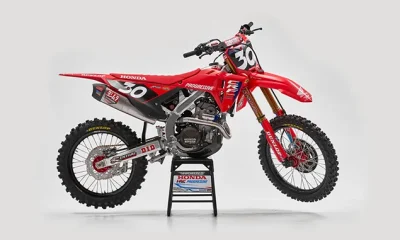
 Motorsports3 weeks ago
Motorsports3 weeks agoJo Shimoda Undergoes Back Surgery
-
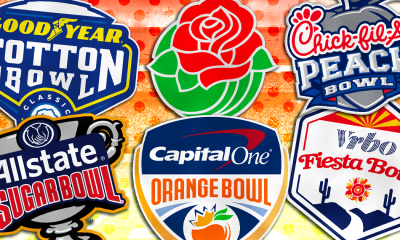
 NIL2 weeks ago
NIL2 weeks agoBowl Projections: ESPN predicts 12-team College Football Playoff bracket, full bowl slate after Week 14
-

 Motorsports1 week ago
Motorsports1 week agoSoundGear Named Entitlement Sponsor of Spears CARS Tour Southwest Opener
-

 Rec Sports3 weeks ago
Rec Sports3 weeks agoHow this startup (and a KC sports icon) turned young players into card-carrying legends overnight
-

 Rec Sports3 weeks ago
Rec Sports3 weeks agoRobert “Bobby” Lewis Hardin, 56
-
Sports3 weeks ago
Wisconsin volleyball sweeps Minnesota with ease in ranked rivalry win
-

 Motorsports3 weeks ago
Motorsports3 weeks agoPohlman admits ‘there might be some spats’ as he pushes to get Kyle Busch winning again
-

 Motorsports1 week ago
Motorsports1 week agoDonny Schatz finds new home for 2026, inks full-time deal with CJB Motorsports – InForum
-

 Motorsports3 weeks ago
Motorsports3 weeks agoIncreased Purses, 19 Different Tracks Highlight 2026 Great Lakes Super Sprints Schedule – Speedway Digest
-
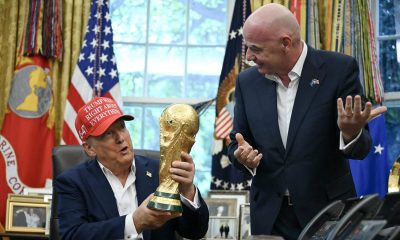
 Rec Sports2 weeks ago
Rec Sports2 weeks agoHow Donald Trump became FIFA’s ‘soccer president’ long before World Cup draw
































